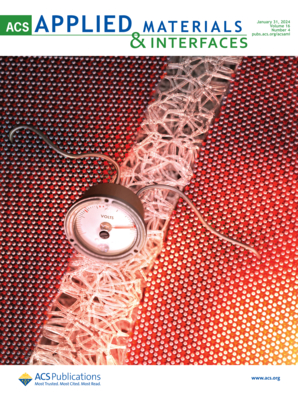血清人类附睾蛋白4的增加与小儿系统性红斑狼疮的疾病活动和全身受累有关
IF 8.3
2区 材料科学
Q1 MATERIALS SCIENCE, MULTIDISCIPLINARY
引用次数: 0
摘要
目的我们旨在研究人附睾蛋白4(HE4)作为儿科发病型系统性红斑狼疮(pSLE)患者潜在生物标记物的情况,尤其是血清HE4水平与疾病活动性和其他实验室检查的关联。方法我们纳入了137名pSLE患者和75名年龄和性别匹配的健康对照组(HCs)。血清 HE4 水平是通过雅培 ARCHITECT i2000SR 免疫分析仪上的化学发光微粒子测定的。组间比较采用独立的学生 t 检验、曼-惠特尼 U 检验、卡方检验或费雪精确检验(视情况而定)。我们还确定了 HE4 与临床参数之间的关系,并使用系统性红斑狼疮疾病活动指数(SLEDAI)和肾脏 SLEDAI(rSLEDAI)评估了疾病活动性。中重度活动性肾病患者的 HE4 水平(57.4 pmol/L,IQR 37.7-164.5)明显高于轻度活动性肾病患者(38.8 pmol/L,IQR 30.1-48.5)或 HCs(38.9 pmol/L,IQR 34.0-46.1),活动性肾病患者的 HE4 水平(77.2 pmol/L,IQR 47.4-224.1)也明显高于非活动性肾病患者(36.1 pmol/L,IQR 27.8-46.7)。ROC曲线分析表明,HE4能区分肾脏(AUC, 0.717; 95% CI, 0.632-0.801)、血液学(AUC, 0.740; 95% CI, 0.648-0.831)和心血管受累(AUC:0.775, 95% CI 0.669-0.880)的pSLE。结论 狼疮患者血清HE4水平升高,且与疾病活动性和全身受累高度相关,这表明HE4是狼疮的潜在生物标志物。本文章由计算机程序翻译,如有差异,请以英文原文为准。
Increased serum human epididymis protein 4 is associated with disease activity and systemic involvement in pediatric-onset systemic lupus erythematosus
ObjectiveWe aimed to investigate human epididymis protein 4 (HE4) as a potential biomarker in patients with pediatric-onset systemic lupus erythematosus (pSLE), particularly on the association of serum HE4 levels with disease activity and other laboratory tests.MethodsWe included 137 patients with pSLE and 75 age- and sex-matched healthy controls (HCs). Serum HE4 level was measured by a chemiluminescent microparticle on an Abbott ARCHITECT i2000SR Immunoassay Analyzer. Comparisons between groups were performed using the independent Student t-test, Mann–Whitney U test, Chi-square test, or Fisher’s exact test, as appropriate. We also determined the relationships between HE4 and clinical parameters and evaluated disease activity using SLE Disease Activity Index (SLEDAI) and renal SLEDAI (rSLEDAI).ResultsSerum HE4 levels in patients with pSLE (44.6 pmol/L; IQR, 32.5–73.5) were significantly higher than those in HCs (38.9 pmol/L; IQR, 34–46.1). HE4 levels were significantly higher in moderate to severe disease activities (57.4 pmol/L, IQR 37.7–164.5) than in mild disease activities (38.8 pmol/L, IQR 30.1–48.5) or HCs (38.9 pmol/L, IQR 34.0–46.1), as well as in active renal disease activities (77.2 pmol/L, IQR 47.4–224.1) than in inactive renal disease activities (36.1 pmol/L, IQR 27.8–46.7). The ROC curve analysis showed that HE4 could discriminate pSLE with renal (AUC, 0.717; 95% CI, 0.632–0.801), hematological (AUC, 0.740; 95% CI, 0.648–0.831), and cardiovascular involvement (AUC:0.775, 95% CI 0.669–0.880). Serum HE4 levels significantly correlated with several indicators related to renal morbidity, such as creatinine, blood urea nitrogen, uric acid, cystatin C, urine protein/24 h, etc.ConclusionSerum HE4 levels in pSLE were elevated and highly associated with disease activity and systemic involvement, indicating HE4 as a potential biomarker for pSLE.
求助全文
通过发布文献求助,成功后即可免费获取论文全文。
去求助
来源期刊

ACS Applied Materials & Interfaces
工程技术-材料科学:综合
CiteScore
16.00
自引率
6.30%
发文量
4978
审稿时长
1.8 months
期刊介绍:
ACS Applied Materials & Interfaces is a leading interdisciplinary journal that brings together chemists, engineers, physicists, and biologists to explore the development and utilization of newly-discovered materials and interfacial processes for specific applications. Our journal has experienced remarkable growth since its establishment in 2009, both in terms of the number of articles published and the impact of the research showcased. We are proud to foster a truly global community, with the majority of published articles originating from outside the United States, reflecting the rapid growth of applied research worldwide.
 求助内容:
求助内容: 应助结果提醒方式:
应助结果提醒方式:


